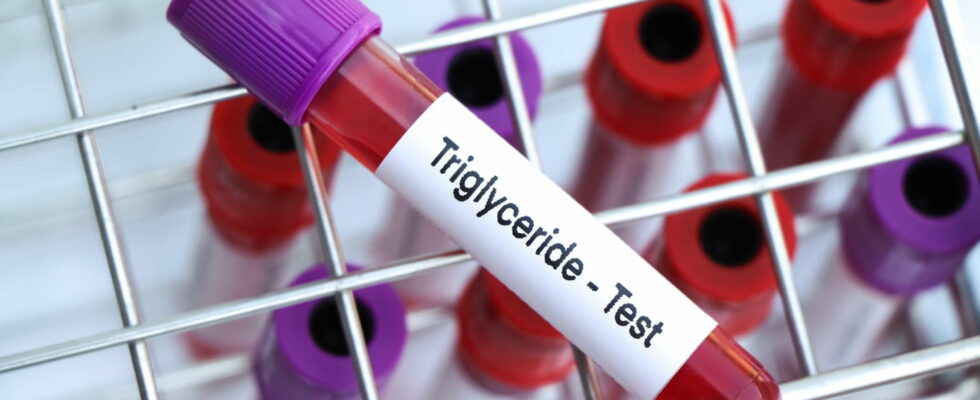The older you get, the more your triglyceride level needs to be monitored.
Several levels allow you to assess your cardiovascular health: blood sugar, blood pressure, cholesterol and even triglycerides. “Triglycerides are lipids which come from food (butter, red meats, cheeses, etc.) or which are produced by intestinal cells, which are stored in adipose tissue which is essentially made up of fats. They constitute a significant reserve of energy: you therefore need neither too much nor too little“, immediately tells us Jeanne Vicaire, cardiology nurse. We measure the triglyceride level during a lipid profile by blood test, preferably carried out on an empty stomach.
It is a different measure of cholesterol level and particularly important when we suspect metabolic syndrome (which corresponds to the association of several disorders linked to the presence of excess fat inside the belly) and resistance to insulin (diabetes). “On the other hand, for everything related to coronary heart disease, we will prefer to measure cholesterol“, would like to clarify our interlocutor.
The older we get, the more we are interested in the level of triglycerides. “The dosage of triglycerides is recommended from the age of 40 in men and 50 years in women every 5 years if you do not have cardiovascular risk factors and every 3 years when you have risk factors such as overweight, obesity, hypertension, diabetes, tobacco or alcohol“, indicates our expert. In 60-year-old men, the normal triglyceride level is between 0.5 and 2 mmol/L, or between 0.45 and 1.70 g/l. In 60-year-old women, it varies between 0.40 and 1.60 mmol/L or between 0.35 and 1.40 g/l.
To lower your triglyceride level, you must reduce your consumption of saturated fats (cheese, fatty meats, butter, cold meats, etc.), favor lean proteins (white meats, eggs, fish, legumes), whole grains, vegetables. and omega-3 (salmon, herring, sardines, mackerel, etc.). Regular physical activity is also essential: at least 30 minutes per day of an activity that increases the heart rate (brisk walking, cycling, swimming, etc.).
